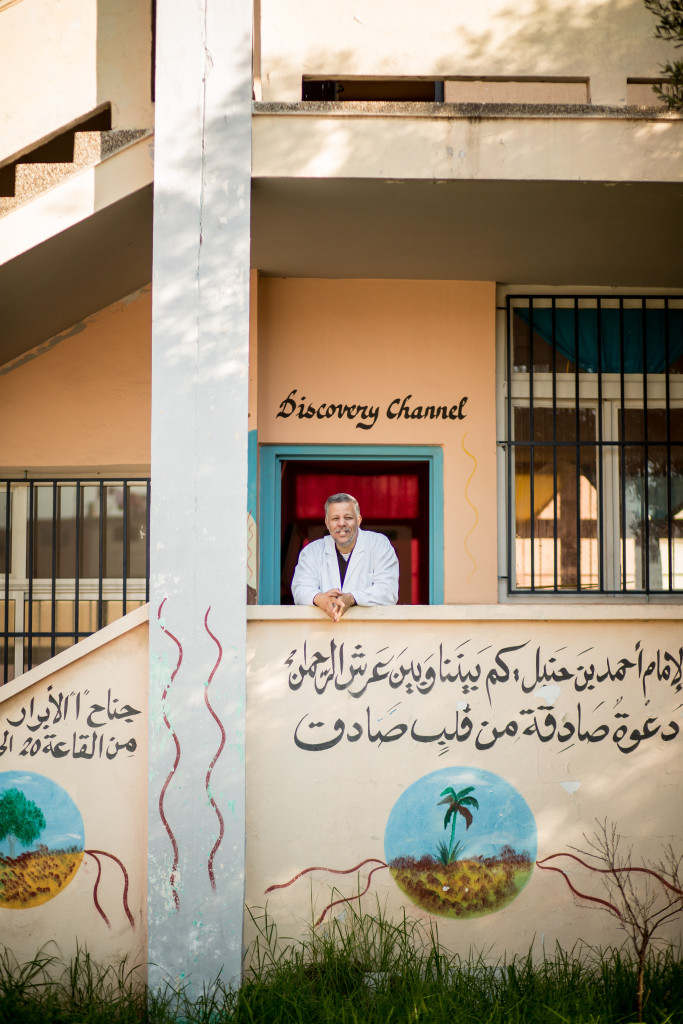
Discovery's Resources Bringing Change, Hope To Schools Abroad
This blog was originally posted on the National Cable & Telecommunications Association blog on Aug. 31, 2015, you can read that post here.
Have you ever seen a cheetah before? Maybe not in person, but certainly on television or on the Internet. It might surprise you to know that children in Africa who live just a few hours from a national park full of cheetahs and wildlife have no idea what a cheetah looks like. For developing communities across the globe that lack televisions, computers, technological devices and sound education, this is not surprising, explains Aric Noboa, the president of the Discovery Learning Alliance (DLA).
To rectify the disconnect between communities and their surroundings, DLA—a non-profit established by Discovery Communications—sets out to expose children in developing countries to the kind of crucial media that they’re missing in their lives. This mission becomes possible through the organization’s link to Discovery’s programming and resources, which it uses to bring educational benefits to underprivileged groups in areas like Africa, Latin and South America, and parts of Eastern Europe.
Most of the schools DLA partners with don’t have textbooks, let alone technology. DLA makes it possible for kids to see what they’re learning about on the big screen, whether that be a cheetah, an animated representation of a germ, or the solar system. “It makes the unseen all of a sudden seen for these students, it brings education alive,” says Noboa, and it adds visual context to the content that is being taught in their classroom.
DLA’s mission centers around four pillars—equipment, content, training for teachers, and community. But Noboa explains that the scope of DLA’s work involves much more than just bringing these resources to schools. The DLA team spends considerable time with ministers of education, local governments and school leaders to map out a sustainable long-term plan that doesn’t require a school to rely every year on donations for technology maintenance, that encourages community and parental involvement, and that ensures a school is set up for long-term success. The result is a more than 80 percent sustainability rate for schools and communities over the 18 years that DLA has been in existence in 16 countries, according to Noboa.
“In terms of content though, we can’t just pull things off Discovery’s shelf and assume it will be relevant to these classrooms in the developing world,” said Noboa. In other words, DLA works to take Discovery’s expertise and repurpose it into content that’s new, fresh, and engaging for children in their particular area of the world. For example, DLA released a film principally for Africans on the science behind HIV, with the goal of helping kids and adults make better decisions about their health. The film, Inside Story, which uses animation to help make the film more interesting, is a narrative about a young soccer player who becomes exposed to HIV. “We believe it’s the most widely viewed film in Africa of all time,” said Noboa. The film has been distributed there for a few years via over 40 broadcasters throughout the continent, including DVD distribution through ministries of health, education, and schools and free online downloads in Africa.
Noboa emphasizes that one of DLA’s main goals is not just to improve student learning in math and literacy, but in motivation, one of the greatest determining factors of learning success. He’s seen motivation firsthand in communities where DLA is present. He recalls a school right outside of Nairobi, which added a second floor to its building because of a sudden dramatic enrollment increase when kids and their families learned that television had come to their school. And the little girl who recently told Noboa’s team that she didn’t know women could be pilots until she saw for the first time a woman on a television program flying a plane.
“We’re taking the Discovery brand and the power of video and we’re using it to give people hope through education—to give students a future that sadly many don’t have,” said Noboa.
For cable networks and providers potentially dipping into this type of work in the developing world, Noboa advises to think principally about the long-term impact. “It’s not about a press opportunity or a single event. It’s about creating sustainable community change that will ultimately be good for communities and for your business.”
Here at Cable Impacts, it is one of our goals to share these kinds of stories to help spread the mission of social responsibility throughout the cable industry, and to illustrate how cable’s resources can be used to enhance communities. To find out more about this kind of work and how cable providers are leveraging their platforms to advance education and parental involvement for children and families, read about Cable Impacts and the initiative on closing the digital divide.
Photos courtesy of Discovery Learning Alliance; photographer Ian Christmann.
